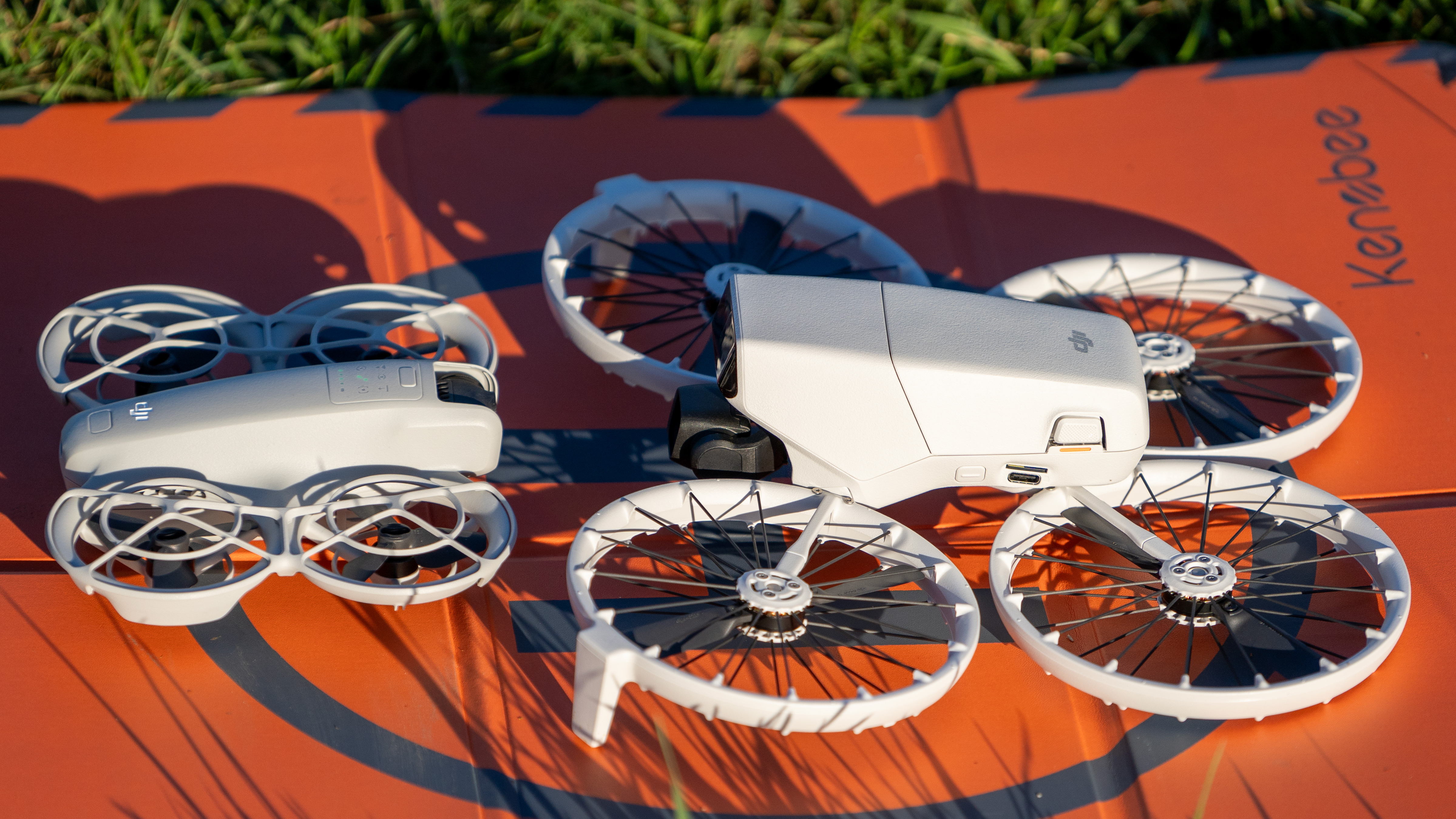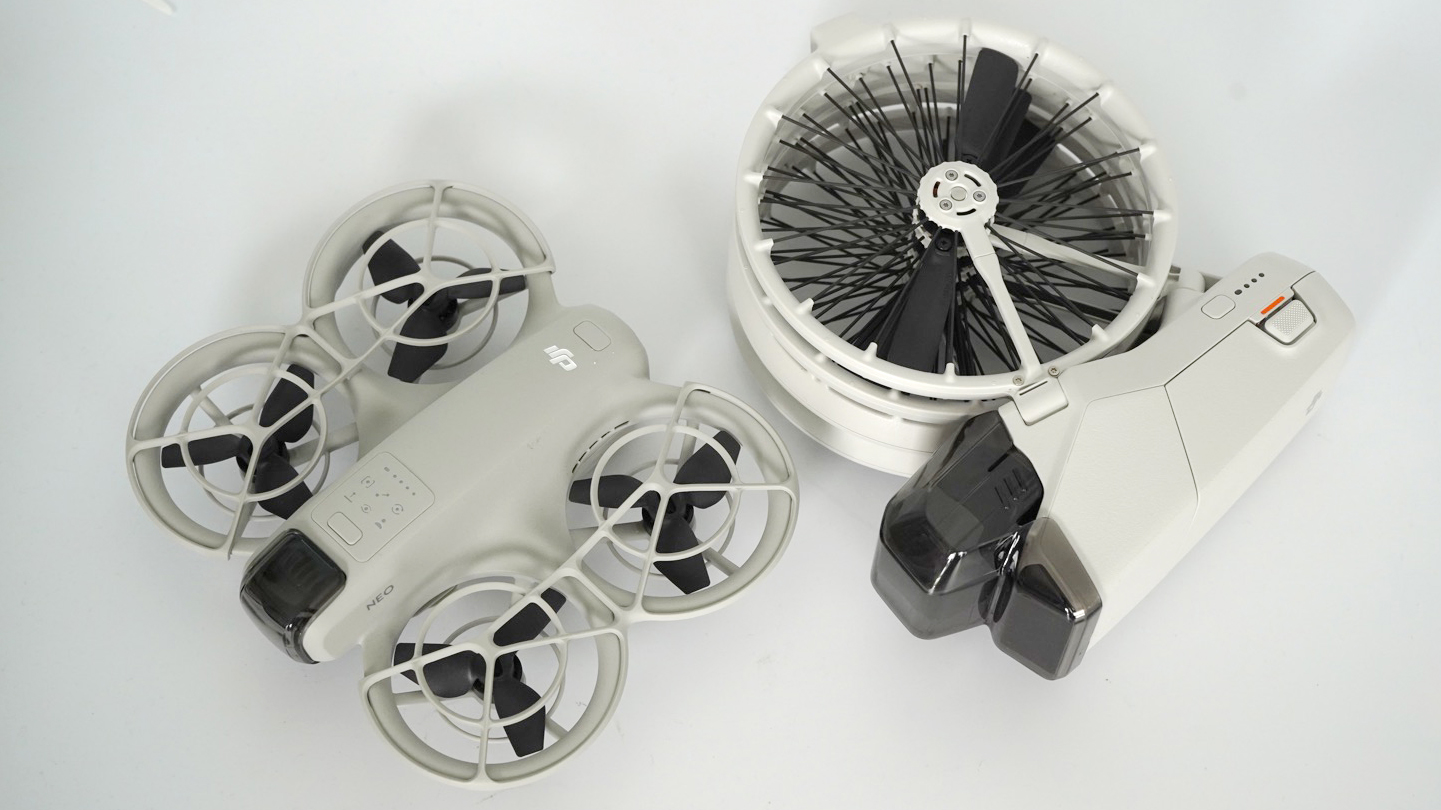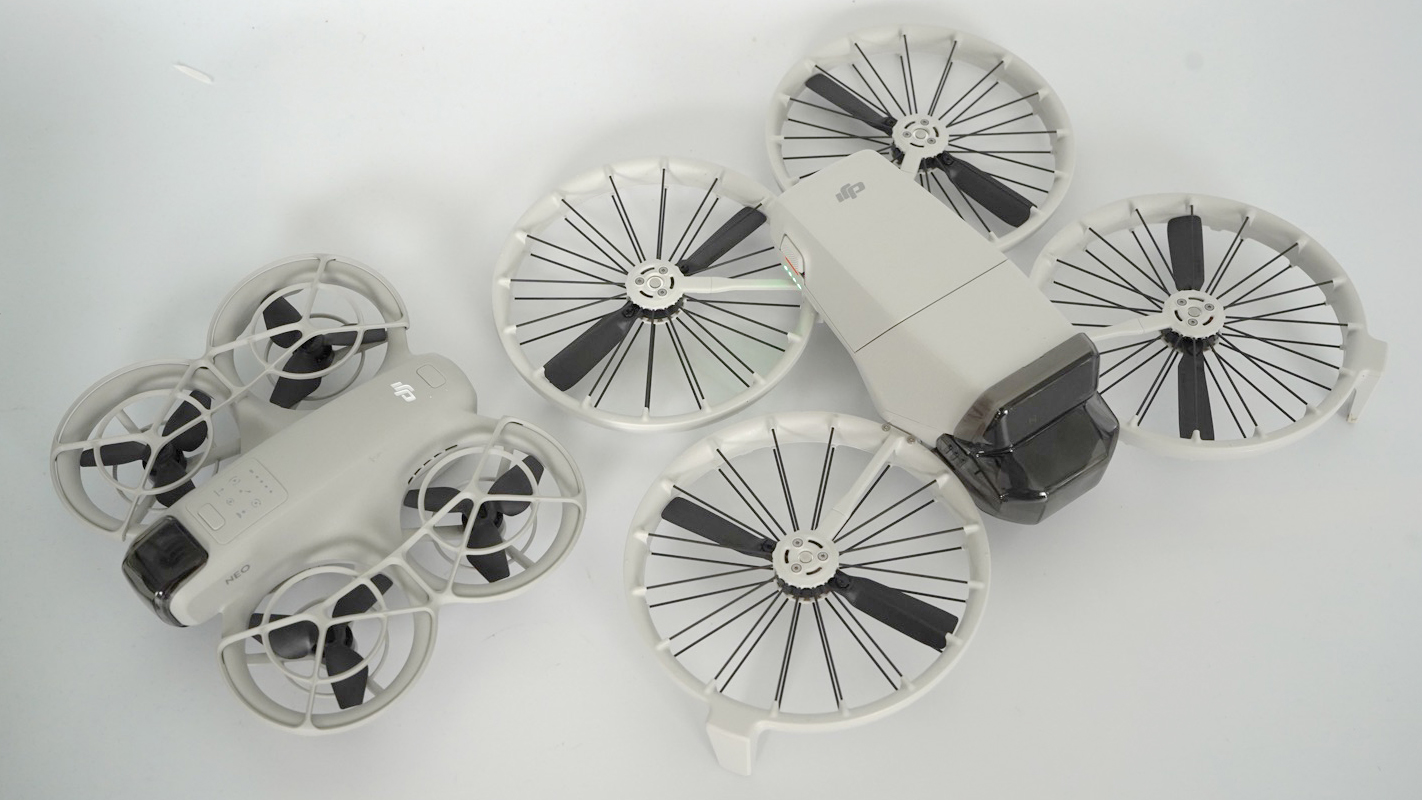DJI Flip v DJI Neo – which of these affordable drones should you pick?
Two revolutionary drones – DJI Flip and DJI Neo – bring new, safety-conscious designs and unique features. Which should you choose?

I've tested both the DJI Flip and the DJI Neo – with the help of my eight-year-old son – so I've got a good idea which is the right one for which job.
Neither drone is alike, but both share a few things in common. Obviously they're both from the leading brand, DJI, and you can see immediately that they have propellor guards. The difference in appearance, compared to most drones, is stark because there are fixed circles around the props, though the two drones approach the guards in a stylistically different way.
In both cases, though, they frame the propellors making it harder to hurt anyone with a rotating propellor blade. They have aerodynamic advantages and disadvantages, and of course add weight, too, so make no mistake – they're added to drones where safety is a concern.
Camera
- DJI Flip: 4K60fps with 1/1.3-inch sensor on 3-axis gimbal, optional 10-bit D-Log M color format.
- DJI Neo: 4K 30fps camera 1/2-inch sensor, 12MP camera on 2-axis gimbal
The DJI Flip is comfortably the better camera of the two, similar in specification to the DJI Mini drones despite the very different looking design. It is built to hold the camera.
The slight disadvantage of the design is that the camera is slung beneath the fuselage so it can only look level and down.
The Neo is built with low-weight as a primary goal, so the camera can be tilted, but uses digital image stabili
Safety
- DJI Flip: Folding frame with guards, 249g, collision sensor.
- DJI Neo: Fixed frame with guards, 135g
Both drones have protective frames, which is a big boost for safety as there is little chance of being sliced by a rotating propellor, and almost none at the sharp edge (though, to be fair, it's possible to get your little finger into the gaps between spokes at the edges on the Flip, but, as I can testament, you'll still only hit the side of the prop which isn't as bad).
Another key factor affecting safety is weight. A weight moving at speed can do more harm if it weighs more. The Flip is heavier, just under the maximum weight for the 'ultralight' category, and reasonably fast, though there is some 'spring' in the design.
Finally, the Flip also boasts a collision sensor so you cant easily fly it straight forwards into something (or someone). Unless, of course, you switch it into 'Sport' mode – the fastest mode – which disables this. (So, keep an eye on the kids!)
Features
- DJI Flip: Lidar collision sensor, hand landing, subject tracking, phone only operation or controller
- DJI Neo: Subject tracking, hand landing, headset compatability, phone only operation or controller
Both drones can be operated without a controller, taking off from the hand and using AI tracking to orbit or follow you for basic drone-based selfie videos, and be controlled just from the phone. In fact you don't even need to buy the Neo with a remote controller.
The Flip, though, is also a fully featured photography/video drone – at least in the "ultralight" category. It can be remotely controlled and the controller is included.
The Flip even has some voice control features, as well as a loud built-in speaker to confirm the auto controls if you choose to fly that way. With the remote, it has more sophisticated higher altitude QuickShots.
The Neo can also be used as an FPV drone with the DJI Goggles, which adds a lot of possible fun (though it's not as quick as one of the best FPV drones.)
Value
From a photography – and especially video – perspective the DJI Neo represents amazing value in terms of the quality of images at a low entry point because the base model is sold without a 'proper' remote control, allowing the use of the AI tracking feature and/or your phone.
But it's also really good value as a toy drone, and good value as a FPV drone (with excellent digital video) if you opt for the goggles. The fact it can do all of these things to a standard comfortably above most consumer products (and way above most toys) makes the price extremely impressive.
The DJI Flip is more expensive, but it is a different proposition. It is like a ruggedised photo/video drone light enough to carry around but good enough for RAW and serious 4K filmmaking.
The fact the Flip can be used for long high-altitude flights in winds up to Level 5 means it effectively replaces a drone like the DJI Mini 3, while adding family-friendly features that you might not use all the time into the bargain.
In other words, both drones seem to represent good value in their niche, though obviously if you're buying your first drone just for fun the Neo is cheaper – whereas if you have video ambitions the Flip seems an ideal first drone (perhaps the only drone you'll need).
The best camera deals, reviews, product advice, and unmissable photography news, direct to your inbox!

With over 20 years of expertise as a tech journalist, Adam brings a wealth of knowledge across a vast number of product categories, including timelapse cameras, home security cameras, NVR cameras, photography books, webcams, 3D printers and 3D scanners, borescopes, radar detectors… and, above all, drones.
Adam is our resident expert on all aspects of camera drones and drone photography, from buying guides on the best choices for aerial photographers of all ability levels to the latest rules and regulations on piloting drones.
He is the author of a number of books including The Complete Guide to Drones, The Smart Smart Home Handbook, 101 Tips for DSLR Video and The Drone Pilot's Handbook.


